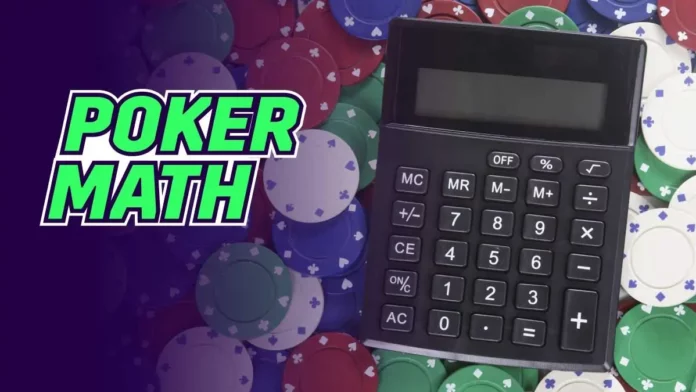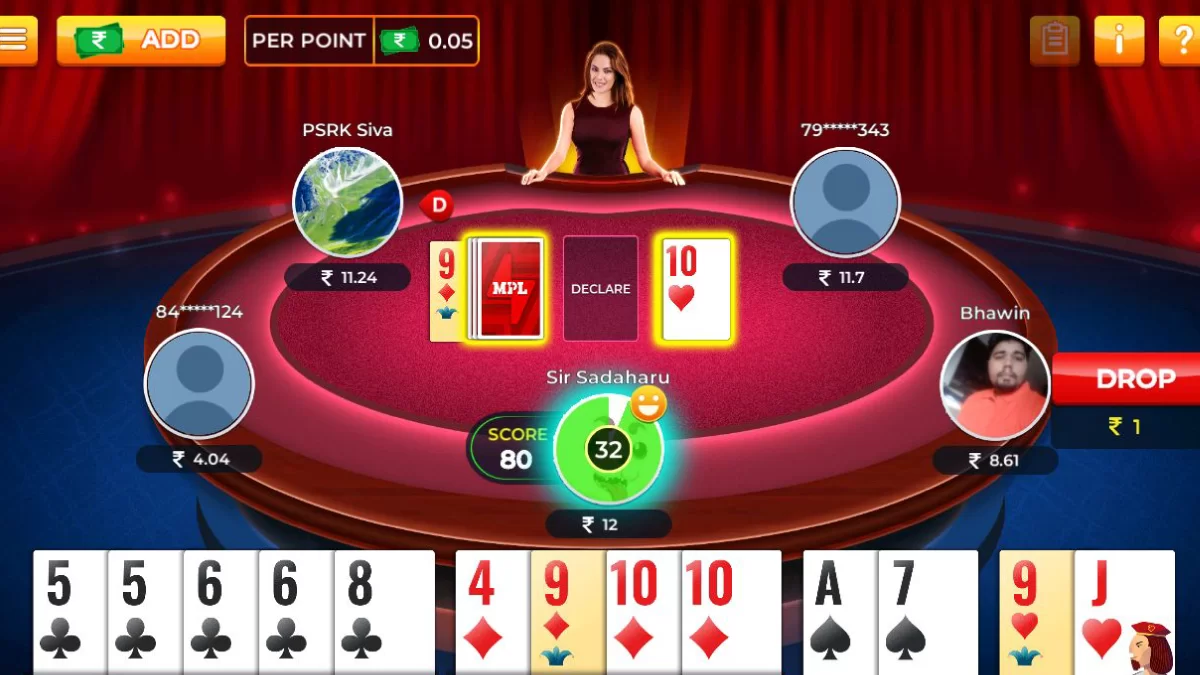Poker is a game of skill that involves the use of poker strategy and skills to read opponents and situations to gain an advantage in every hand when you play poker. It is also known as a game of mathematics where players calculate the pot odds or poker probability of them or their opponent winning a hand in any situation. Poker math is all about understanding the mathematical concepts in poker to improve your chance of winning the game. Poker mathematics is one of the main elements that help players crush poker tables and create big wins.
So, let’s understand what poker math is and how it is used by players while playing poker.
What is Poker Math?
While most modern poker players may hate math, it is not as difficult as it sounds. Poker math is a tool that helps players calculate the pot odds in poker and the chances of winning the pot while making a decision. Poker is a game of probabilities; every outcome or poker hand has a certain probability of occurrence, and players make use of poker probabilities in their decision-making process.
If a player is successful at reading their opponent, they have an advantage over the opponents while playing each hand. To gain an edge over the opponents, the players use basic poker math and probability to calculate pot odds of winning a hand in any situation.
A poker game is generally played over several rounds between 2-10 players, using a standard deck of 52 cards. Each player attempts to make the best 5-card hand at the poker table to win the game. The players place bets based on the strength of the card pairs in hand, and the player with the best hand after all betting rounds are completed is the winning player that wins the pot. Determining the implied odds or pot odds, hand combinations, poker, and fold equity, it is essential to learn poker math. Winning a poker game doesn’t solely depend on the knowledge of poker math; however, it gives the poker players the upper hand at winning the game.
When is Poker Mathematics used?
Poker players mainly use poker mathematics to decide if it is worth betting and chasing a card to make a winning hand. There are two elements that help them make this decision:
- The number of Outs they have ( the number of cards that can make a winning hand) and what is the probability that an Out will be dealt.
- Calculating the Pot Odds to determine the amount they will win for betting on the Out that will be dealt.
The players compare the chances of them hitting one of the Outs against the Pot Odds and determine whether it will be a good bet. For instance, if you have A♣️ and 8♣️ in the big blind and everyone folds but the small blind calls an extra 5c making the total pot before the Flop equal 20c (2 players x 10c). Then in the flop, K♣️9♦️4♣️ are dealt, and the opponent bets 10c. This is where a player would use poker math to decide whether to call or not.
Another example of how essential poker math is for poker players is using poker math to analyse the strength of an opponent’s hand. When you are judging the strength of the cards in your opponent’s hand, there may be a possibility that the opponent is bluffing and you have a stronger hand. Assuming that the opponent bluffs one time for every three times they have the best hand on the river, it means;
- There is a 3 in 4 chance that the opponent has a better hand in that round.
- There is a 3 in 4 chance that you don’t have the stronger hand.
- There is a 1 in 4 chance that your hand is better than the opponent’s hand.
- Your chance of winning the hand is 3 odds to 1 or 3:1. This means that you will win 1 time for every 3 times that you lose.
Calculating Pot Odds
Pots odds in a poker show the relation between the number of chips required on the call and the amount in the pot. Pots odds are expressed in percentages. Pot odds is equal to the percentage of total pot a player would invest during a call.
For instance, if your opponent bets $50 into a pot of $100 and you call with $50 in the pot, then the pot odds will be ($50/$200)*100 = 25% of the total pot.
The Math behind Poker Sequence
One of the first steps of learning how to play poker is understanding the poker hand rankings. Poker math is used to predict outcomes of a certain hand by calculating probability percentages and ratios. The hand rankings (from high to low) in popular poker games such as Texas Holdem and Omaha are:
- Royal Flush
- Straight Flush
- Four of a Kind
- Full House
- Straight
- Three of a Kind
- Two pair
- One pair
- High Card
If one was to calculate the poker odds of getting one of these hands during a game of poker, this is how it would go:
Let’s take the best hand in poker – Royal Flush. The royal flush consists of A, K, Q, J, and 10 of the same suit. Since a standard deck contains four suits, there are four ways of making this hand. Therefore, the probability of being dealt the highest hand in poker is 4/2,598,9604, which equals 0.000001539. This is why being dealt a Royal Flush is a very rare occurrence.
Being dealt a Straight Flush has a slightly higher probability than a Royal Flush. A straight flush consists of five consecutively ranked cards of the same suit, such as 7, 6, 5, 4, 3. The probability of being dealt a straight flush is 0.00001539
Similarly, poker players can also calculate the probability of being dealt any other hand on the chart using poker math.
FAQs
What are poker pot odds?
The ratio between the number of chips needed to make the call and the amount in the pot is known as the pot odds. Although most modern poker players prefer to represent pot odds as the percentage of the total pot they would invest to call, pot odds are traditionally described using ratios.
How are pot odds calculated in poker?
In poker, pot odds are expressed as a percentage. Pot odds are calculated based on the percentage of the total pot that a player would invest if they were to call. For instance, if a player calls $50 after the opponent bet $50 into a $100 pot, the pot odds would be 25% of the total pot ($50/200).
What are implied odds in poker?
Calculating pot chances using implied odds takes into account potential gains from later streets. Pot odds calculation just takes into account the amount currently in the pot, whereas calculating implied odds makes the assumption that the pot is larger because of the possible winnings from a powerful hand.
Is maths important in a poker game?
While some successful poker players don’t rely extensively on poker math, learning the math that drives the poker game significantly improves the odds of winning poker games in the long run.










